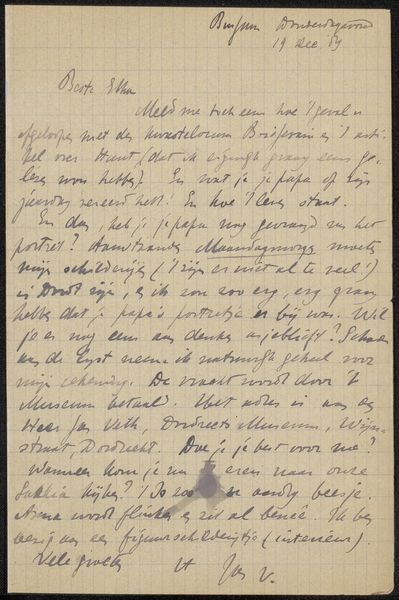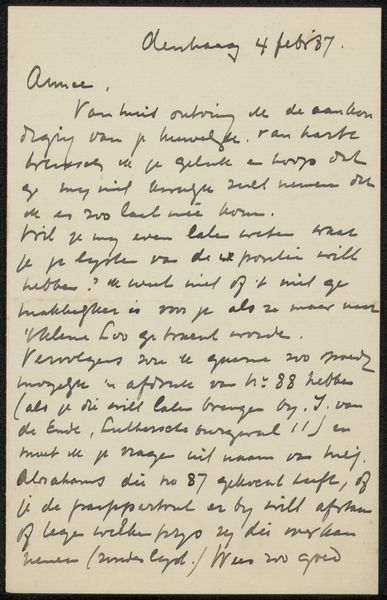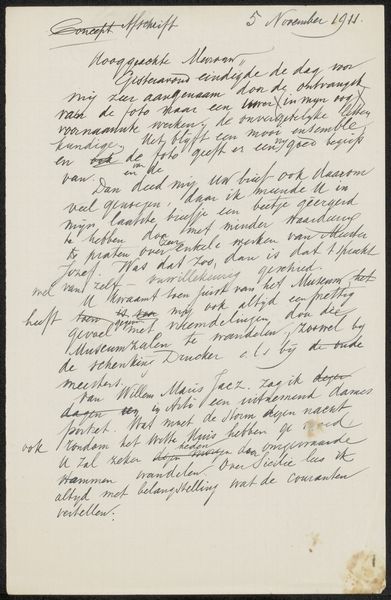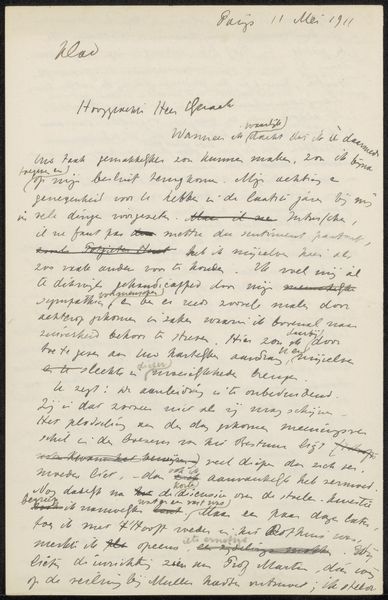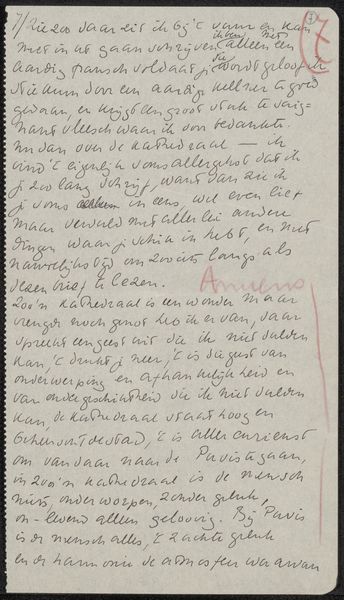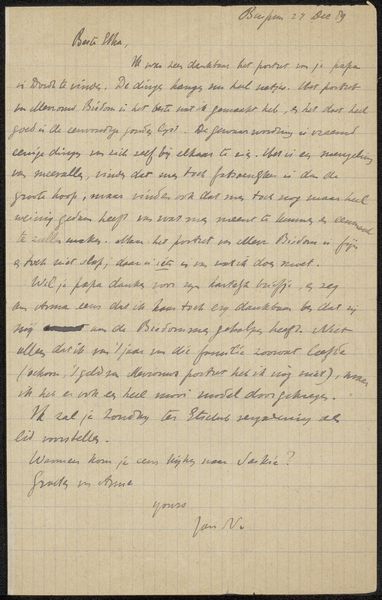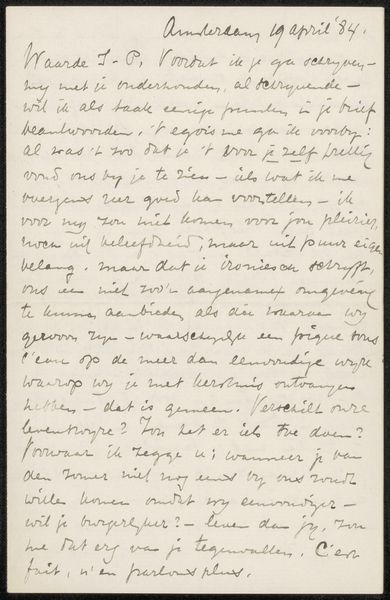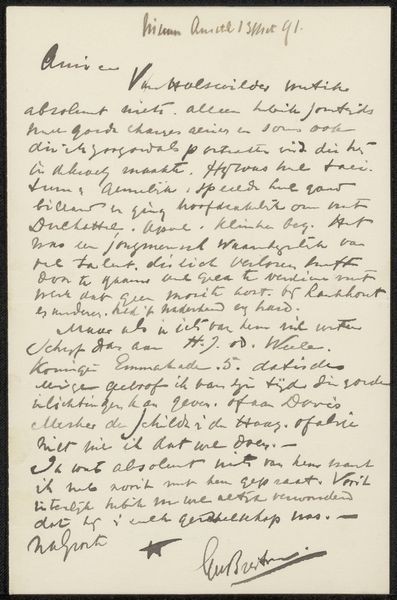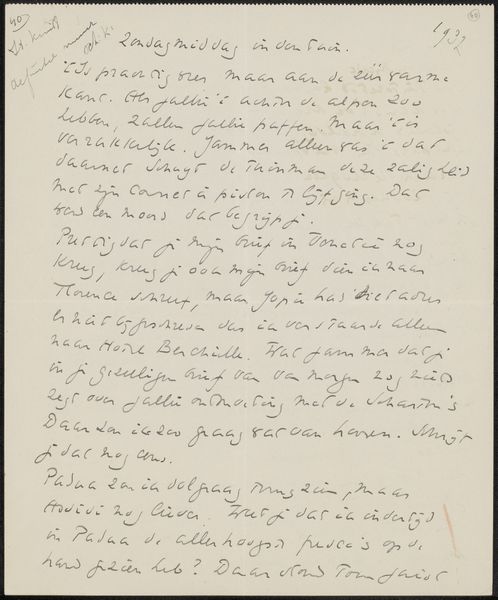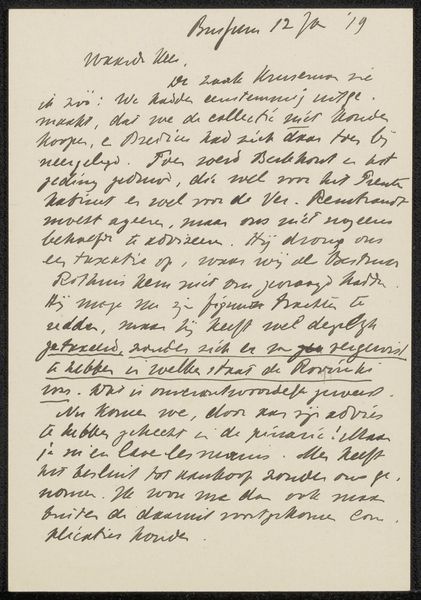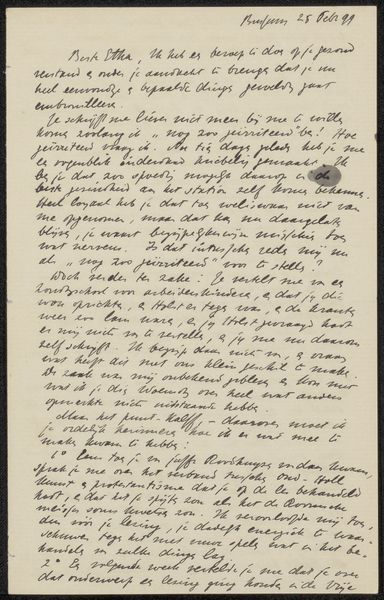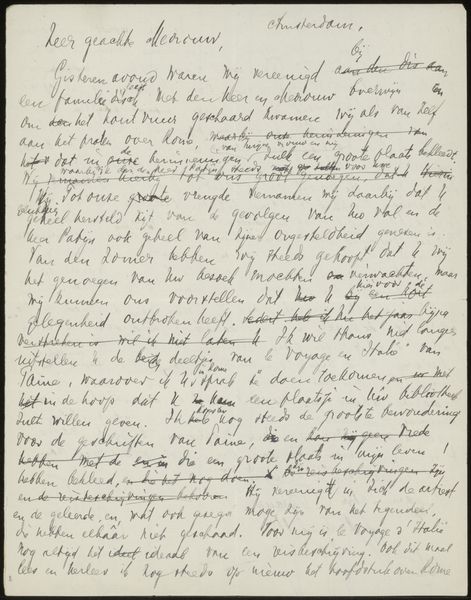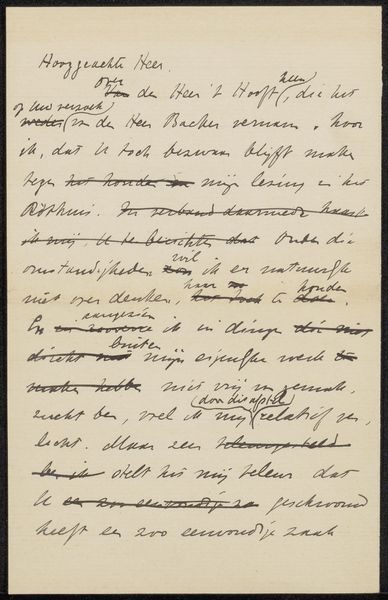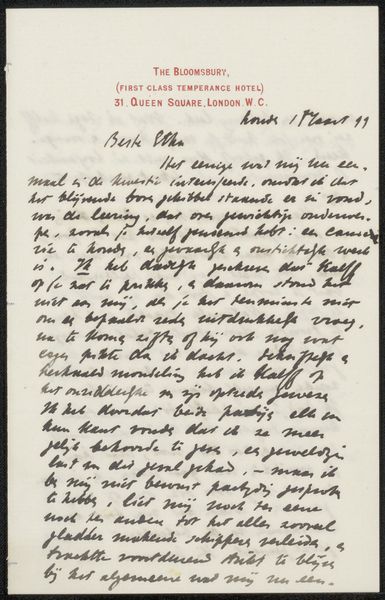
drawing, paper, ink
#
drawing
#
paper
#
ink
#
calligraphy
#
monochrome
Copyright: Rijks Museum: Open Domain
Curator: The artwork before us is a letter by Jan Veth, titled "Brief aan Antoon Derkinderen." The letter, drawn with ink on paper, has been dated somewhere between 1874 and 1925, and it's part of the Rijksmuseum's collection. It's fascinating how a simple sheet of paper can carry so much history, isn't it? Editor: Absolutely! My first impression is that of a whispered confidence. It feels so private, doesn’t it? Like eavesdropping on a conversation held years ago in dim light with a steaming cup of something warm at hand. The handwriting itself seems to possess a unique cadence, each word like a note in a carefully composed melody. Curator: Jan Veth, a prominent figure in Dutch art and literary circles, often engaged with social and political themes. A close reading of the letter itself gives insight into the complexities of art institutions, networks of friendship, and creative ambitions that Veth and Derkinderen navigated together. It adds so much more depth to our understanding of the period. Editor: True. Calligraphy, like this, offers such a visual language beyond mere words. The slant, the weight of the ink, even the little flicks and flourishes…it all conveys tone and emotion in a way that typed words just can't match. Do you think that Veth’s emotional state, at the moment of writing, played a role in his letterform’s aesthetics? Curator: That’s an interesting way to consider it. I lean more towards the societal pressures. The art world, then as now, was a network built on patronage, critique, and power. A letter to a peer wouldn't only have been a personal exchange. Editor: So, every stroke carefully considered? Perhaps! The monochrome really adds to that somber and thoughtful atmosphere, for me. It encourages me to focus on the details, to look more closely and maybe even decipher the unsaid emotions. It is not a letter, it is a meditation, or a self-interrogation. Curator: That makes me think how the act of reading this, is like participating in a quiet, subtle protest against our image-saturated age. It is really captivating how accessible, and yet complex, it can be to explore an image from a non-digital world. Editor: Well, that is a compelling invitation to slow down and consider the textures of both words and the relationships. Curator: Precisely, let's cherish the moment with a work so intertwined with history and intimacy.
Comments
No comments
Be the first to comment and join the conversation on the ultimate creative platform.
